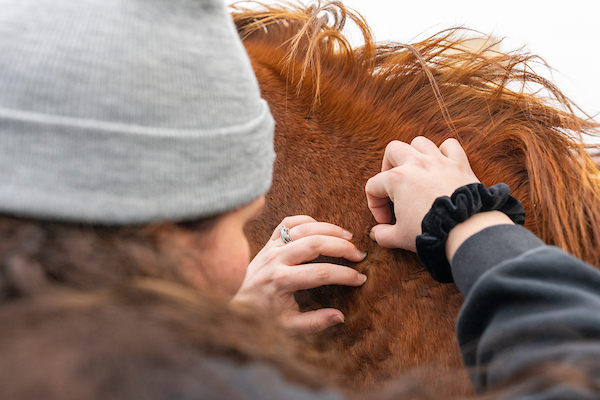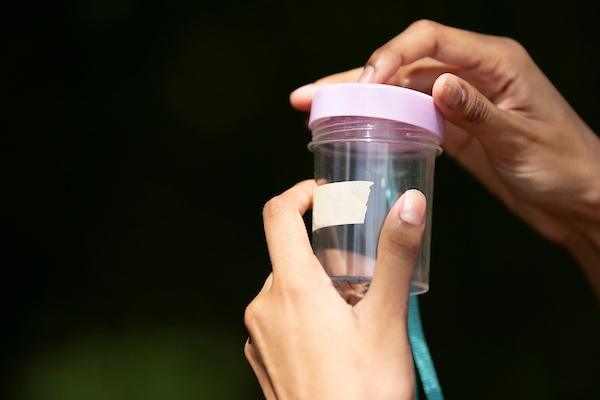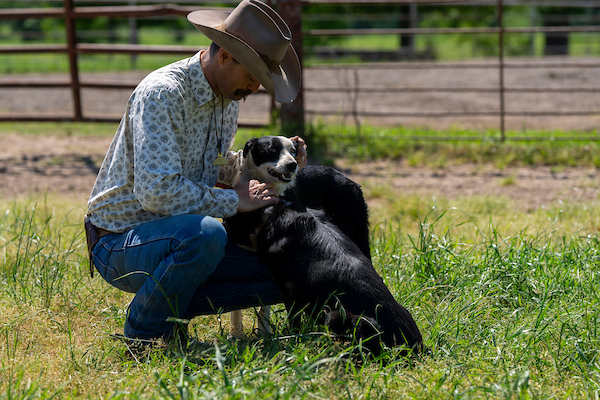What to Do if You Suspect New World Screwworm in Your Herd
Authors: Thomas B. Hairgrove1, Jacob W. Thorne2, Ron Gill3, Andy D. Herring4, Phillip Kaufman5, Sonja L. Swiger5
If you suspect New World screwworm (NWS) in your livestock, immediate action is critical to prevent further spread and protect animal health. This guide outlines the steps to take if NWS is suspected starting with the core response approach: Inspect. Collect. Protect.
Immediate Actions
If you suspect screwworm infestation:
- Contact Authorities:
- Texas Animal Health Commission (TAHC) for livestock and pets: 800-550-8242
- Texas Parks and Wildlife Department (TPWD) for wildlife: 512-389-4505
- Notify your private veterinarian.
- Do not delay reporting. Early detection limits spread and minimizes long-term consequences.
For full response procedures and identification steps, see the July 2025 technical bulletin, “Rethinking Livestock Management to Consider Screwworm.”
Inspect.
It is vital to frequently monitor livestock and look for signs of NWS such as:
- The smell of rotting tissue.
- Visible burrowing larvae.
- Abnormal looking wounds on both livestock and wildlife.
- Suspect cases should be reported even if unsure.

Collect.
If NWS is suspected, report it to the Texas Animal Health Commission. Contact a local veterinarian and/or AgriLife Extension County agent. Follow the instructions of the veterinarian or animal health professional on next steps.

Protect.
Work with your veterinarian for a treatment plan for the affected animal and the rest of the herd. Always follow your veterinarian’s treatment plan. Potential options can include:
Topical treatments:
- Permethrin sprays: Over-the-counter, kills and repels flies.
- Permethrin ear tags: Add protection during active months.
Systemic treatments:
- Coumaphos: Requires a certified applicator license due to toxicity. Applied topically but works systemically.
Wound care:
- Clean wounds thoroughly and apply disinfectant.
- Cover if possible during fly season.
- Monitor healing daily.

Why Reporting Matters
- Early detection enables fast containment.
- Delay in reporting could allow widespread infestation.
- While temporary movement restrictions may occur, long-term industry impact from established populations would be far worse.
Conclusion
Suspecting screwworm? Act quickly to Inspect. Collect. Protect. Call your vet and state officials, collect samples, and follow treatment protocols. Proactive communication and early action protect your livestock and your neighbors.
For additional guidance and a detailed action plan, consult the full technical bulletin: “Rethinking Livestock Management to Consider Screwworm” (July 2025).
1Professor and Extension Veterinary Specialist, Department of Animal Science, College of Agriculture and Life Sciences, Texas A&M University, Texas A&M AgriLife
2Assistant Professor and Extension Sheep and Goat Specialist, Department of Animal Science, College of Agriculture and Life Sciences, Texas A&M University, Texas A&M AgriLife
3Professor and Extension Livestock Specialist, Department of Animal Science, College of Agriculture and Life Sciences, Texas A&M University, Texas A&M AgriLife
4Professor, Department of Animal Science, College of Agriculture and Life Sciences, Texas A&M University, Texas A&M AgriLife
5Professor, Department of Entomology, College of Agriculture and Life Sciences, Texas A&M University, Texas A&M AgriLife
